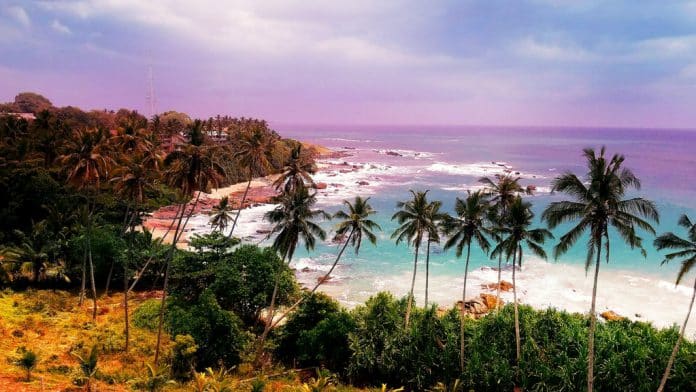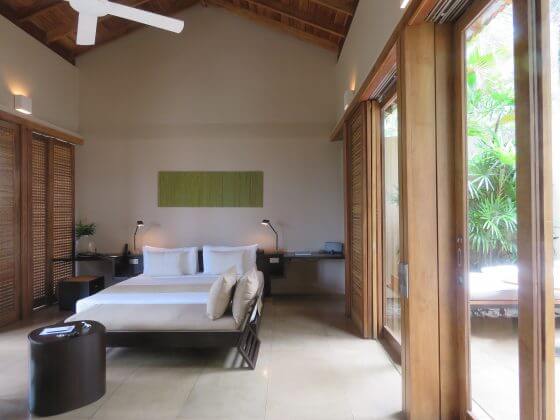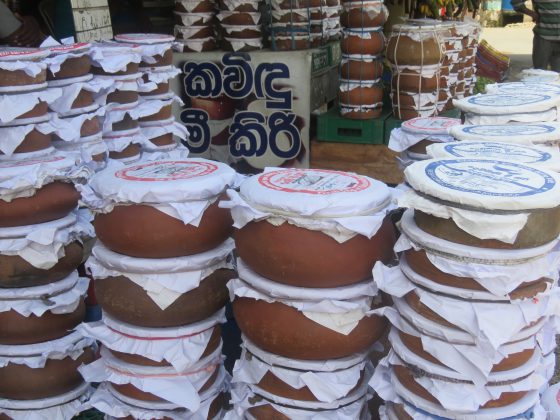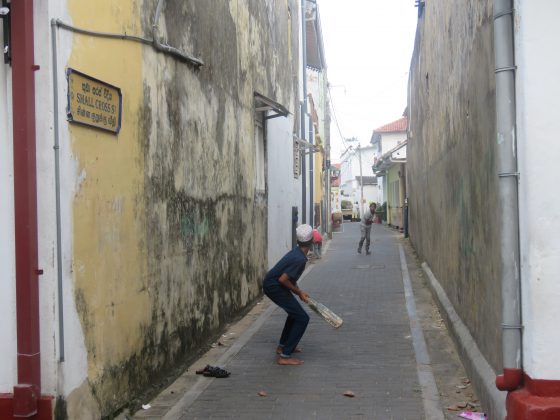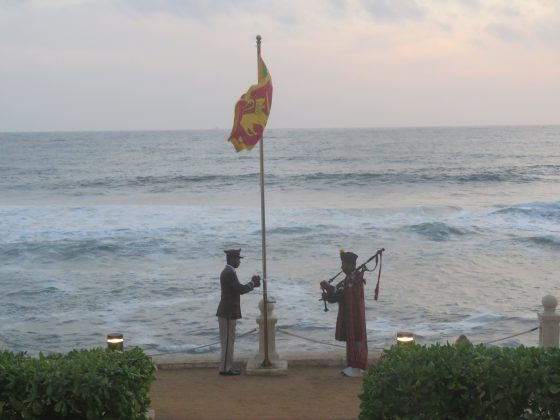Colombo
I set out early on my first day in Colombo, heading for Galle Face Green, a strip of well-trodden lawn, with vendors selling ice cream, hot snacks and grilled seafood, and where locals mingle, play cricket and fly kites. I walked along the Green to the Fort, the heart of Colombo with a rich cultural heritage reflective in the architectural melting pot of Dutch, Portuguese and British influences, including the 17th century Dutch-built ramparts, Old Dutch Hospital, President’s House, Lighthouse Clock Tower and Grand Oriental Hotel.
 Following the winding laneways and narrow streets of the Fort, I then entered the bazaar district of Pettah – a frantic, noisy and fascinating neighbourhood, with traders selling aromatic spices, fruit and vegetables, Ayurveda medicine and herbs. Following the disorientating lanes, I eventually arrived at Cinnamon Gardens – an upscale area with grand mansions, high-end boutiques, and sights including the grandiose Old Town Hall, Victoria Memorial and Viharamahadevi Botanical Gardens, with its giant Buddha.
Following the winding laneways and narrow streets of the Fort, I then entered the bazaar district of Pettah – a frantic, noisy and fascinating neighbourhood, with traders selling aromatic spices, fruit and vegetables, Ayurveda medicine and herbs. Following the disorientating lanes, I eventually arrived at Cinnamon Gardens – an upscale area with grand mansions, high-end boutiques, and sights including the grandiose Old Town Hall, Victoria Memorial and Viharamahadevi Botanical Gardens, with its giant Buddha.
One of the benefits of visiting Sri Lanka is how easy it is get around, as the island is so compact: cities are walkable, roads are generally good, and touring with a car and driver allows you to sit back, relax and take in the lush tropical scenery.
Hambantota
The following day I arrived at the islands’ South-Eastern tip, to visit the expansive grounds of the Shangri-La’s Hambantota Resort and Spa that hugs the Indian Ocean, offering spectacular views.

That night, over a delicious Sri Lankan curry, Moshi Perena, the General Manager of the Shangri-La’s Hambantota Resort, recommended local suggestions for renowned National Parks. Yala National Park, which I explored the following day, has the world’s highest concentration of leopards, as well as boasting impressive numbers of elephants, sambars, sloth bears, jackals, and crocodiles.

Bundala is an important wetland area for migratory birds, flamingos, pelicans, herons and egrets, and Udawalawe, is home to a large elephant population. Other local suggestions include surfing at Arugam Bay, and whale watching at Mirissa (between November to April).
Tangalle
After a tuk tuk ride past orchards, rice paddies, tea plantations and rainforest, I arrived at Tangalle. We drove down a succession of scenic bays until we reached a narrow, winding road leading down to the Amanwella Resort with views that stretch out across a stunning crescent shaped beach of golden sand, regarded as one of Asia’s finest.

The town of Tangalle is attractive, with a large fishing fleet, colonial buildings, a busy market, and nearby temples. I visited the magnificent Mulkirigala Rock Temple – that rises steeply toward the sky, with reclining Buddha statues, and cave temples painted with ancient murals and after climbing 500 steps to the top I was rewarded with glorious views of the lush landscape below.
Galle
The drive to Galle follows golden sandy bays, rocky headlands and a string of settlements that stretch along the coastline. Most of these settlements are rustic except Unawatuna, a former fishing village now bustling from international development and Koggala beach, a popular tourist destination to view the renowned stilt fishermen.
Founded in 1505 by a Portuguese captain seeking refuge from a storm, Galle became popular when it was discovered to offer a rich array of spices, and was taken over by the Dutch in 1640 and the British in 1796. UNESCO has world heritage listed Galle, one of Sri Lanka’s highlights; a place that reveals itself slowly and well deserving of several days’ stay.
A fortified town that is best discovered on foot, start from the old ramparts which offer glorious sea views before descending to discover the labyrinth of alleyways, warehouses and low slung former merchant’s bungalows. As the winding streets run into one another, lined with boutiques and cafes, you will also see locals who call the streets home, thereby preserving the town’s unique, cultural charm.
As a port of call for passengers travelling by ship between Europe and Asia and Australia, Galle during the 19th century built several first class hotels, which have all been beautifully preserved and restored. The most splendid is Amangalla, formerly the New Oriental Hotel – the former residence of the Dutch governor, built in 1684. This hotel is one of Asia’s oldest and is simply exquisite, with the décor blending in perfectly with the original antique furnishings and fixtures, and a lush tropical garden of hibiscus, fragrant frangipani and mature banyan trees.
Amangalla also offers a variety of meals to be eaten along the gorgeous, long colonnaded verandah, from breakfast of tropical fruits, thick buffalo curd, drizzled with kitul palm syrup and savoury hoppers, to the afternoon tea of fluffy scones, to a dinner of assorted traditional Sri Lankan curries.
Feeling disinclined to leave I reluctantly bought a train ticket and hopped aboard to Colombo. The route hugged the coastline, as we passed swaying coconut palms along the beach, local markets and fishing villages. All along the way, waves lapped just metres from the track. I ended my time in Sri Lanka with a final night in Colombo at the Galle Face Hotel, a grand colonial seaside hotel dating back to 1864. As the bagpipes played and the flags were taken down and neatly folded, a longstanding tradition at the hotel, I enjoyed a fruit-filled cocktail and reclined in my wicker chair to watch the sunset casting its orange glow, and felt more relaxed than I had in a long time.
Sri Lanka far exceeded expectations, and I know that I will soon return to enjoy the beautiful tranquillity the island has to offer.
TRAVEL FILE
Getting there Singapore Airlines
Getting around Driving yourself in Sri Lanka is not advised, trains offer postcard views, but cover only part of the island. Buses are impossibly crowded. An English-speaking driver/guide is recommended. All hotels I stayed at can make touring arrangements and offer daily excursions.
Where to stay Sri Lanka offers exceptional accommodation choices with exemplary service. In Colombo, the historic Galle Face Hotel or brand-new Shangri-La Hotel are the best places to be. Along the southern coastline, the Shangri-La’s Hambantota Golf Resort and Spa is deserving of several days’ stay. At Tangalle, Amanwella is architecturally stunning in an idyllic location, and in Galle, Amangalla is one of the most beautiful hotels I have ever stayed in.
Dining Sri Lankan cuisine is one of the most complex cuisines in Asia, drawing on influences from India, and from a long legacy of trade with Asia, the Netherlands and Portugal. Seafood is a highlight and vegetarians are well catered for.
When to go Sri Lanka enjoys pleasant temperatures year-round, and has two monsoon seasons – South West between May to August and North East from October until December.
Shopping Tea and locally produced artisan products, including woven linens, batiks and traditional woodcarvings.
Travel tips Obtain an electronic e-visa prior to arrival and bring a copy with you. Cost for a single-entry tourist visa is USD$35. Avoid changing money at the airport, upon entry or exit. I found the best rate from ‘Prasanna Money Exchange’ in Colombo.



